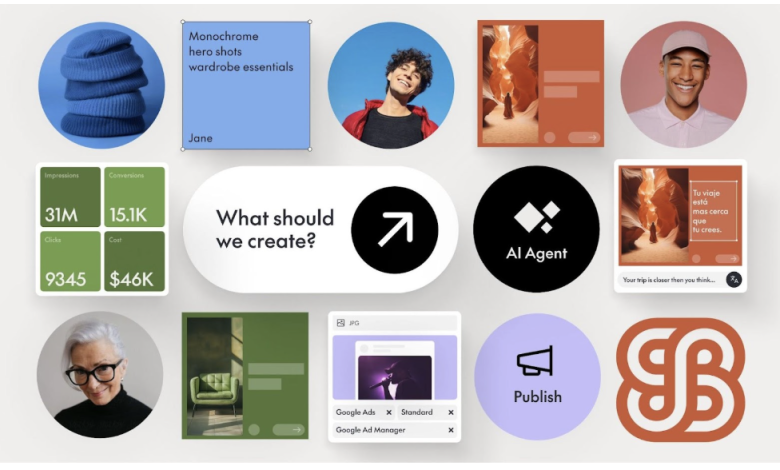
In a crowded marketing-tech landscape, tools proliferate: analytics suites, design apps, content planners, ad managers, copy assistance tools. Each solves something, but at the cost of handoffs, context loss, data silos, and friction. What if instead of layering tools, you embedded a living loop of AI agents that sense, create, deploy, and optimize in harmony? That’s the solution offered by The Brief AI Agency.
Why The “Tool Stack” Model Is Showing Strain
Marketing leaders across industries are experiencing what analysts call “tool fatigue.” Teams juggle analytics platforms, creative suites, CRMs, and ad managers that rarely communicate effectively. Artificial intelligence is now embedded into nearly every marketing platform, yet that abundance has created new silos rather than eliminating them.
According to McKinsey & Company, nearly four in five organizations use AI in at least one business function, but few achieve meaningful integration between teams or tools. Similarly, Deloitte’s Digital Transformation Index highlights that marketers continue to lose time and data fidelity while moving information between disconnected systems.
The lesson is clear: the market doesn’t need more apps, it needs connection. The next evolution of marketing technology isn’t about adding new features, but about weaving existing ones into a unified, intelligent ecosystem that actually works.
This is the gap The Brief AI Agency aims to close, positioning itself not as another tool but as a living framework where AI agents collaborate, learn, and execute as a single, adaptive system.
The Brief’s Architecture: Agentic Loop Vs. Tool Stack
According to The Brief’s website and its rebrand release, the platform revolves around four specialized AI agents designed to work in a closed feedback loop:
- Discover: Gathers competitive ad insights, creative trends, and strategy direction
- Create: Generates assets, copy, and video variations that align with brand style
- Launch: Publishes directly to ad networks like Meta and Google with compliance built in
- Optimize: Analyzes performance data and recommends improvements
Each agent passes context directly to the next, removing the “export → upload → analyze” merry-go-round that plagues most marketing teams. The Brief system delivers campaigns 90% faster and at 35% lower cost than traditional workflows, while serving nearly 10,000 brands worldwide.
What Problems Does the Agentic Loop Actually Solve?
| Common Friction Point | The Brief’s Solution |
| Context loss between stages | Shared agent memory and context |
| Format mismatches during export | Direct publishing to platforms |
| Slow iteration cycles | Optimize feeds directly into Create |
| Fragmented analytics | Cross-channel data analysis loop |
| Brand inconsistency | Creative generation tied to brand kit |
What makes The Brief notable isn’t its use of AI; it’s the structural intelligence of its feedback system. Instead of just embedding AI assistants in each tool, the company is merging the tools into an adaptive environment.
Market Context, Enablers, And Constraints
In determining your marketing strategy, it helps to see the bigger picture of AI-driven marketing and automation.
- Agentic AI Is Mainstreaming Fast. Forbes identifies “Agentic Teamworking” and “Marketing to AI Agents” as two of the top eight AI trends for 2026. The Brief is leaning directly into that curve.
- Businesses Are Ready To Invest. A Forbes x Cloudera report found 87% of enterprises plan to increase AI-agent budgets in the next year.
- AI Can Deliver Measurable Value. Reuters reported that Klarna saved $10 million annually in marketing costs by automating creative production, proof that when designed well, AI loops have tangible benefits.
- Ethics And Bias Remain Challenges. Research on arXiv highlights the risks of bias and homogenization in AI-driven advertising systems, serving as a reminder that oversight is essential.
How Smart Teams Should Pilot The Brief
Early adopters will need structured experimentation to extract value responsibly:
- Start Small And Focused. Pick one campaign or channel (e.g., Meta Ads) to run fully through the AI agent loop.
- Set Guardrails. Establish human approval steps, brand tone checks, and KPIs for AI-generated creativity.
- Track Attribution And Lift. Compare campaign results to traditional methods to prove incremental ROI.
- Iterate Rapidly. Use The Brief’s Optimize loop as a learning engine, not a replacement for human insight.
- Scale Gradually. Expand to other channels only after validation, ensuring that data governance and creative diversity stay intact.
In short: treat The Brief as a collaborative system, not an autopilot. The best results will come from pairing human intuition with machine precision.
Why This Story Resonates With The Industry
The Brief’s launch coincides with a structural shift: we’re moving from AI-assisted workflows to AI-coordinated ecosystems. Forbes calls this “the rise of orchestration intelligence”, where tools no longer just assist humans but assist each other.
By combining creative automation, analytics feedback, and deployment control, The Brief embodies this orchestration model. Its closest analogues are emerging internal projects at Meta and Google, where agentic orchestration has reduced content cycle time by 70–80%.
AI is no longer just a productivity boost; it’s becoming the architecture of the modern marketing department. The Brief’s agentic loop illustrates a future where campaigns are living systems: sensing, learning, and improving autonomously. It’s pushing marketing toward something larger: a connected ecosystem of intelligent agents that think together.





